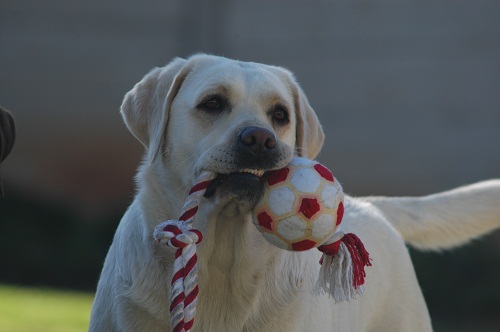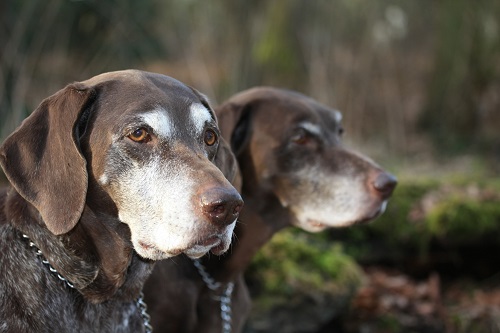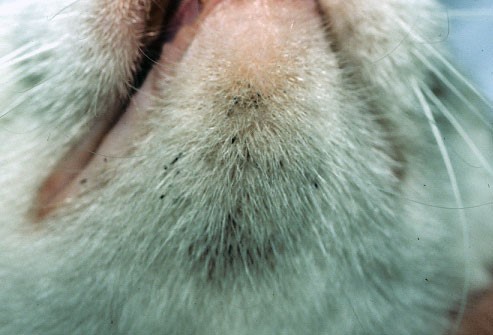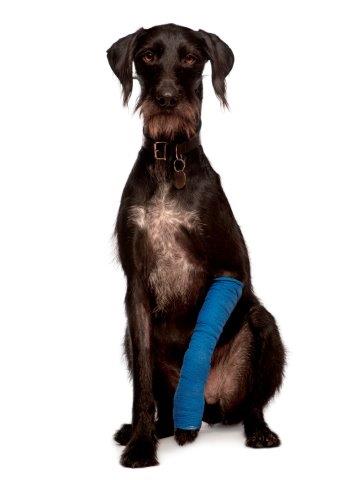
View Vetwebsites Articles
False Pregnancy

Pregnancy
False pregnancy, also known as Phantom pregnancy or Pseudo-pregnancy, is a condition of both dogs and cats, whereby the unsterilised female animal (regardless of whether she was mated or not) shows some or all of the typical signs of pregnancy but is not really pregnant. In other words, she shows mammary gland development (with or without milk production) but does not produce any offspring.
Lameness in old dogs

Lameness
As a dog gets older, he or she may start to struggle to get up or get a little slower on walks. You may notice that they are worse in winter than in summer or after resting for a prolonged period. Sometimes they may not to be able to place any weight on a leg at all and this may happen quite suddenly. Lameness in older dogs can be broadly placed in three categories:
Lameness in young dogs

Lameness
Getting home to find your puppy or young dog not placing weight on a leg is always a concern. There are many different reasons why a young dog may limp, some more serious than others. Causes of lameness can be broadly placed into three different categories:
Proptosis

Displacement of the eyeball
Proptosis is defined, as the forward displacement of the globe (eyeball) out of the socket, with the eyelids trapped behind the globe.
Proptosis is an ophthalmic emergency. Any suspected trauma to your pet’s eye warrants a visit to your veterinarian immediately.
Breeding with your dog

Breeding
Understanding the female’s cycle
A female dog will only come into heat for the first time between the age of seven months and anytime up to a year of age. Occasionally this period may be longer. The age at which they first come into heat is governed by a combination of factors but usually smaller breeds start at a slightly younger age than the larger breeds. This is by no means a set rule as there is a great variation. Once she has started to cycle, a female dog will then come into heat every 4 to 7 months but your
Can I give my dog a bone?

Feeding your dog bones - the good, the bad and the ugly
Although most of us grew up with the assumption that bones are good for our pets this is in fact a fallacy, one that more pet owners should be made aware of. Let’s look at some effects and risks involved when feeding bones to pets.
My cat has pimples!

Feline Acne
Feline acne is a common skin condition in cats. Cats of any age can be affected, and there is no breed or sex predisposition.
Cats are often presented to the veterinarian with the complaint of ‘dirt on the cat’s chin, that the owner cannot remove after attempts to clean it’ or ‘bumps on the cats chin’.
What is trichobezoar?

Hairballs in cats
The elusive and very unpleasant hairball is something that every cat owner will experience at some point. Cats in general are very clean and well-kept animals and grooming is an essential routine for them to ensure their cleanliness. A healthy cat is one that grooms. Hairballs are simply a by-product of your cat’s hygiene.
Is your male pet missing testicles?

Cryptorchidism
Cryptorchidism is a condition where the male dog or cat’s testicles have not descended into the scrotum. Descended in this context means that the testicles has come from inside the dog or cat’s belly and are visibly sitting in the ball sack (scrotum).
Can I treat my pet's wound at home?

Wound Care at Home
When managing wounds at home it is important to always contact your veterinarian for assistance. Many home and even human wound remedies are not suitable for use in pets. Determining factors in deciding whether a wound can be treated at home or needs veterinary care includes the severity and age of the wound, the cause and location of the wound, and most importantly if the pet is leaving the wound alone. In most instances the safest and most effective way to deal with it is to take the injured pet to the veterinarian for initial treatment and advice on continued
